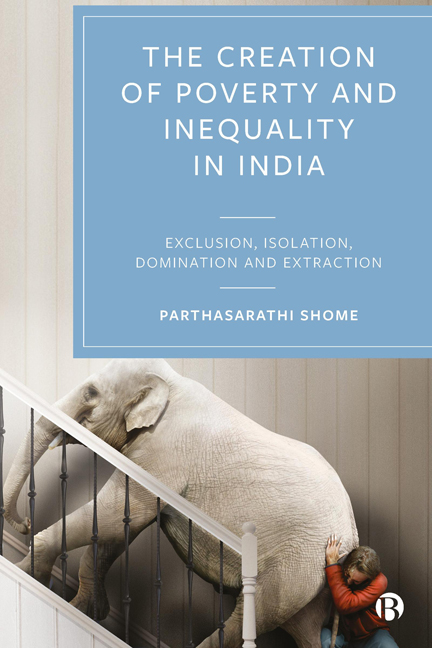Book contents
- Frontmatter
- Dedication
- Contents
- List of Figures and Tables
- Preface
- 1 Introduction
- Part I Macro-Economy and Human Development
- Part II Sources of Inequality and Poverty
- Part III Sectoral Effects
- Part IV Radical Humanism
- Appendix 2.1 Cash Use in India: A Cross-Country Comparison
- Appendix 2.2 Macro-Economic Comparisons: Selected Economies
- Appendix 4.1 Selected Country Tables
- Appendix 5.1 Evidence on Inequality in the US
- Appendix 8.1 Impact of Land Policy
- Appendix 11.1 Impact of Asset Transfer on the Poor
- Index
Appendix 2.1 - Cash Use in India: A Cross-Country Comparison
Published online by Cambridge University Press: 18 January 2024
- Frontmatter
- Dedication
- Contents
- List of Figures and Tables
- Preface
- 1 Introduction
- Part I Macro-Economy and Human Development
- Part II Sources of Inequality and Poverty
- Part III Sectoral Effects
- Part IV Radical Humanism
- Appendix 2.1 Cash Use in India: A Cross-Country Comparison
- Appendix 2.2 Macro-Economic Comparisons: Selected Economies
- Appendix 4.1 Selected Country Tables
- Appendix 5.1 Evidence on Inequality in the US
- Appendix 8.1 Impact of Land Policy
- Appendix 11.1 Impact of Asset Transfer on the Poor
- Index
Summary
The Bank of International Settlements Red Book of March 2021 reported 2018 figures which enable a comparison of cash use in Brazil, China and India. To begin, cash in circulation in terms of GDP has been higher in India (11.3 per cent) than in China (8.9 per cent) though in Brazil it has been much lower (3.8 per cent) reflecting a mammoth successful attempt in the 1990s towards non-cash use. Accordingly, India's non-cash transactions volumes trail that of China as shown in Table A2.1. In 2014, in terms of the number of non-cash transactions, India was about one-eighth that of China. Though India's position did improve from 2014, it nevertheless remained one-eighth that of China, reflecting a significant jump in noncash use in China (so that India failed to catch up). In per-capita terms, the improvement in India was an impressive 350 per cent, nevertheless falling short of China's 426 per cent. It may be noted that, reflecting earlier reform in Brazil, the numbers and increases thereof had already stabilized there over the years considered.
Non-cash transactions have various forms. Table A2.2 reveals their percentage distribution and change during 2014– 18. An examination of their distribution in 2018 reveals significant variations among the three countries. India uses credit transfers and cheques more than Brazil or China while using credit cards less. Brazil uses the most direct debits compared to the others while China's use of credit cards and e-money payments is the highest, reflecting its low use of direct debits or cheques.
A comparison of the changes that occurred during 2014– 18 reveals different trends. First, the use of cards and e-money payments in Brazil has overtaken those of cheques and transfers. In China, cards and e-money payments have grown and direct debits and cheques have become almost insignificant and, of course, there are low reported credit transfers. In India too, the use of cheques and direct debits reduced, while there was a significant increase in credit transfers and cards and e-money payments. It may perhaps be anticipated that both India and Brazil's future experience would also move in the direction of higher shares for cards and e-money payments.
- Type
- Chapter
- Information
- The Creation of Poverty and Inequality in IndiaExclusion, Isolation, Domination and Extraction, pp. 295 - 298Publisher: Bristol University PressPrint publication year: 2023



